SOLAR PLANNING APPROVAL
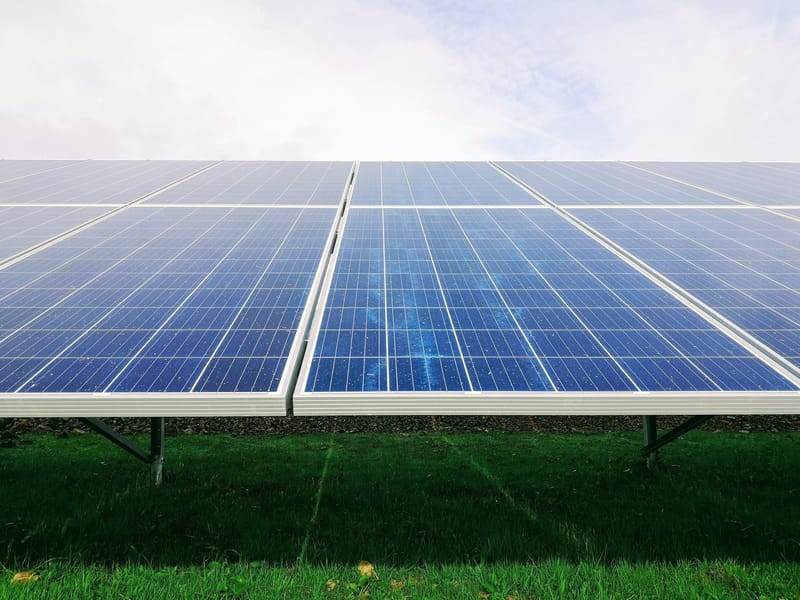
Solar Partner can assist (in house) with preparing drawings, Design and Access Statements for planning applications to enable your solar project to go ahead. Planning approval is required where -
Planning permission for solar panels systems supplying residential properties
The key piece of legislation effecting planning permission for the installation of solar panels for residential properties is The Town and Country Planning (General Permitted Development) (Amendment) (England) Order 2008. This amendment classifies the installation of a residential solar PV or solar thermal system as 'permitted development' meaning planning permission is not required before work commences assuming that the installation fulfils the following conditions:
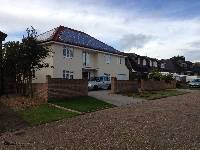 | Roof mounted solar panel installations on houses:
|
 | Roof mounted solar panel Installations on garages / sheds / stables and other outbuildings:Assuming that the outbuildings are already built and they are located within the curtilage of a residential property such as barns, garages, sheds and other outbuildings the installation of a solar PV system is classified as 'permitted development' with the same conditions applicable as to houses (see above). |
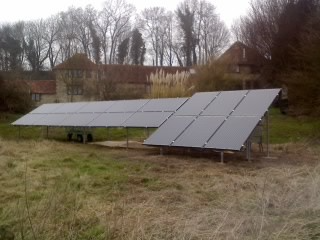 | Ground Mounted InstallationsThe installation of small ground Mounted solar PV systems comes under 'permitted development' when:
Ground mounted systems of greater than 9m sq (4-5 large solar panels) will require planning permission. |
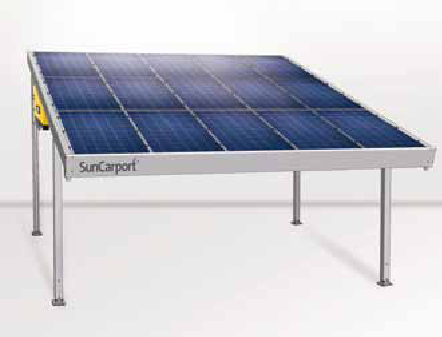 | Solar PV Canopies & Solar PV Carport InstallationsThe installation of solar PV canopies and carports may or may not come under 'permitted development' depending on the nature and size of the installation and the local authority. In general, considerations when building solar PV carports and canopies to be aware of include: |
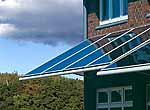 |
In all cases, as so much comes down to interpretation, we advise contacting the local authority before commissioning work on bespoke structures such as solar PV canopies & carports. |
Planning permission for solar PV systems supplying commercial properties
Permitted Development Rights were applied to solar PV systems installed onto commercial, industrial and agricultural roof spaces in England on the 6th April 2012. The key piece of legislation is The Town and Country Planning (General Permitted Development) (Amendment) (England) Order 2012. Our understanding of the legislation is that installing a solar PV panel system will now in most cases come under 'Permitted Development' if the installation is as below:
 | Commercial Roof space solar panel installations
|
 | Ground mounted installations on commercial, agricultural or industrial landThe installation of commercial ground Mounted solar PV systems only comes under 'permitted development' when:
As most commercial solar PV system installation are much bigger than 9m sq, planning permission will be required for commercial ground mounted solar PV systems in nearly all cases. |
 | Commercial solar PV canopies & carportsPlanning permission is required before building carports, canopies, smoking shelters and other PV mounting structures that will serve commercial, industrial and agricultural buildings. |
Planning Permission Required - What's Next?
The need to get planning permission before installing a solar PV system should not put anyone off from installing a system. The installation of solar PV technology is generally well understood and welcomed by most local authorities but understandably some protections need to be in place. The recent changes to 'permitted development rights' are proof of the positive approach taken by central government with regards to installing renewables.
In Solar Partner's experience a planning application with a considered and well designed system that takes account the wider environmental impact and minimises any negative effects of an installation is likely to be treated fairly. Most local authorities have their own guidance about installing renewables available on their websites and many have implemented local plans to promote the further uptake of renewables in their areas.
Planning Permission Required - Key factors the planners will consider.
Efficient Land Use - Development of brownfield and previously unused land is encouraged wherever possible. Where greenfield or agricultural land is to be used, dual usage (such as PV + grazing animals) or increasing the biodiversity in and around the installation area is encouraged.
Temporary Structures / Minimal environmental impact - Although solar PV arrays have a long lifespan the planners especially in the case of ground mounted systems will want to see that the installation area could be reinstated with as little environmental impact as possible should the system be decommissioned.
Preserve Views and Heritage Assets - There is a recognised value in the preservation of views and landscapes. The visual impact of a solar PV installation in areas that could be described as containing heritage assets should be minimised. A heritage asset could be a series of buildings, a landscape, a view, an archaeological site etc. A heritage asset does not need to be a legally protected asset such as a conservation area. A heritage asset could be anything of special interest, of national or local importance or offering some other value that could be adversely affected through the installation of a solar PV system. The cumulative effects of multiple solar PV systems within an area will also be considered.
NB: It is also always sensible to involve local authority planners and particularly AONB and Conservation Area officers involved in planning permission decisions in sensitive areas as early as possible in the planning and system design process.
Building Regulations
Not the same as planning permission but still the responsibility of the local authority is compliance with the Building Regulations. In one way or another solar PV installations will always need to be in compliance with the building regulation (e.g.. the safety of electrical systems and structures). We give examples of where building regulations will likely apply and need to be referred to here: Solar PV Safety and The Building Regulations.
Further Reading, policies and guidance (pdf docs open in a new browser window).
- The Town and Country Planning (General Permitted Development) (Amendment) (England) Order 2012
- The Town and Country Planning (General Permitted Development) (Amendment) (England) Order 2008
- Planning Policy Guidance 2 (PPG2): Green Belts
- Planning Policy Statement 7 (PPS7): Sustainable Development in Rural Areas.
- By Design: Urban Design in the planning system, towards better practice
- Planning Policy Statement 22 (PPS22): Renewable Energy
- Planning practice guidance for renewable and low carbon energy (July 2013)
NB: This list is not maintained or updated, current users should ensure that the latest document version is being used by checking to see if a later version is available from the original source.
Speak to Solar Partner and we will talk you through the process. Contact us today on 07919 686 076.


